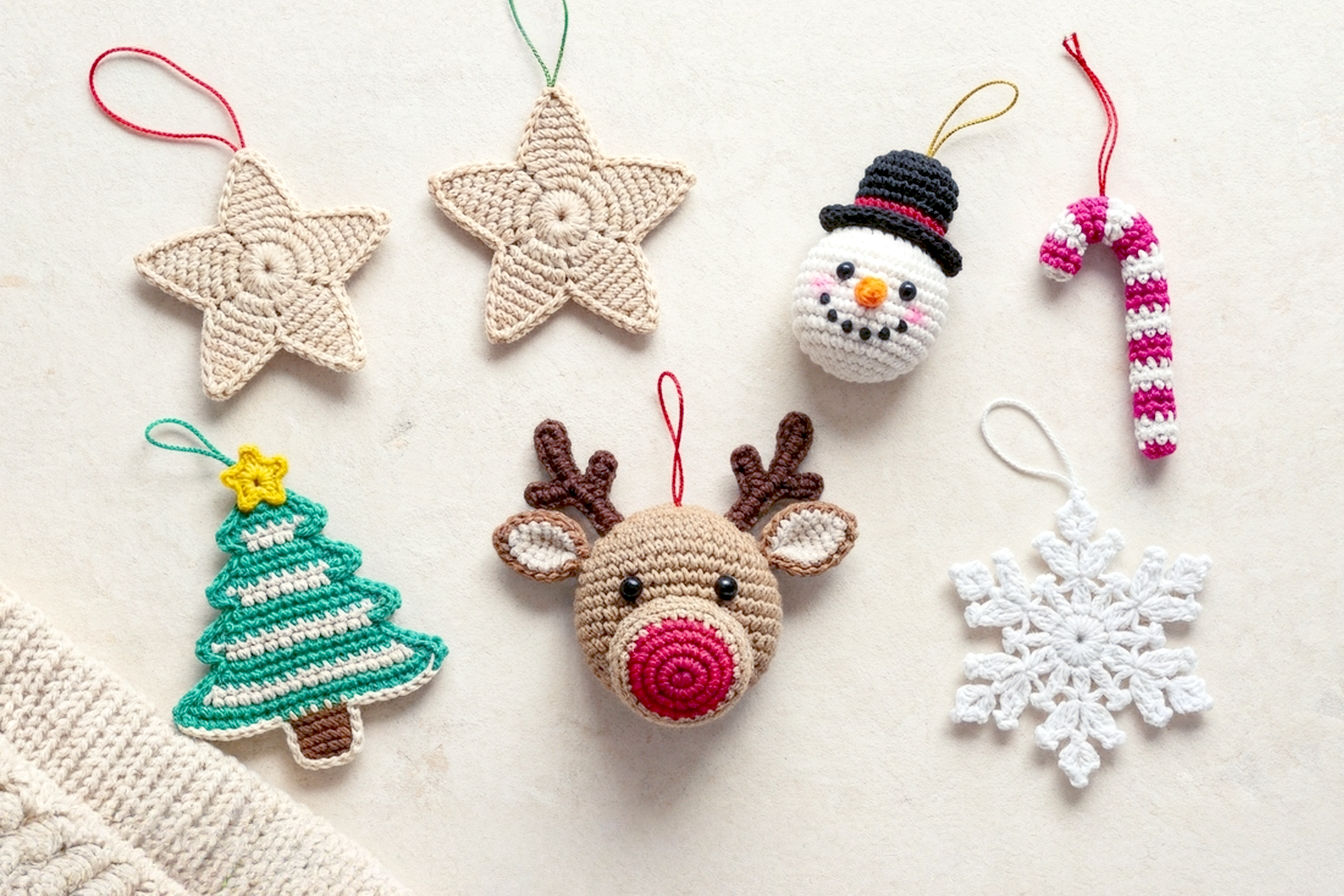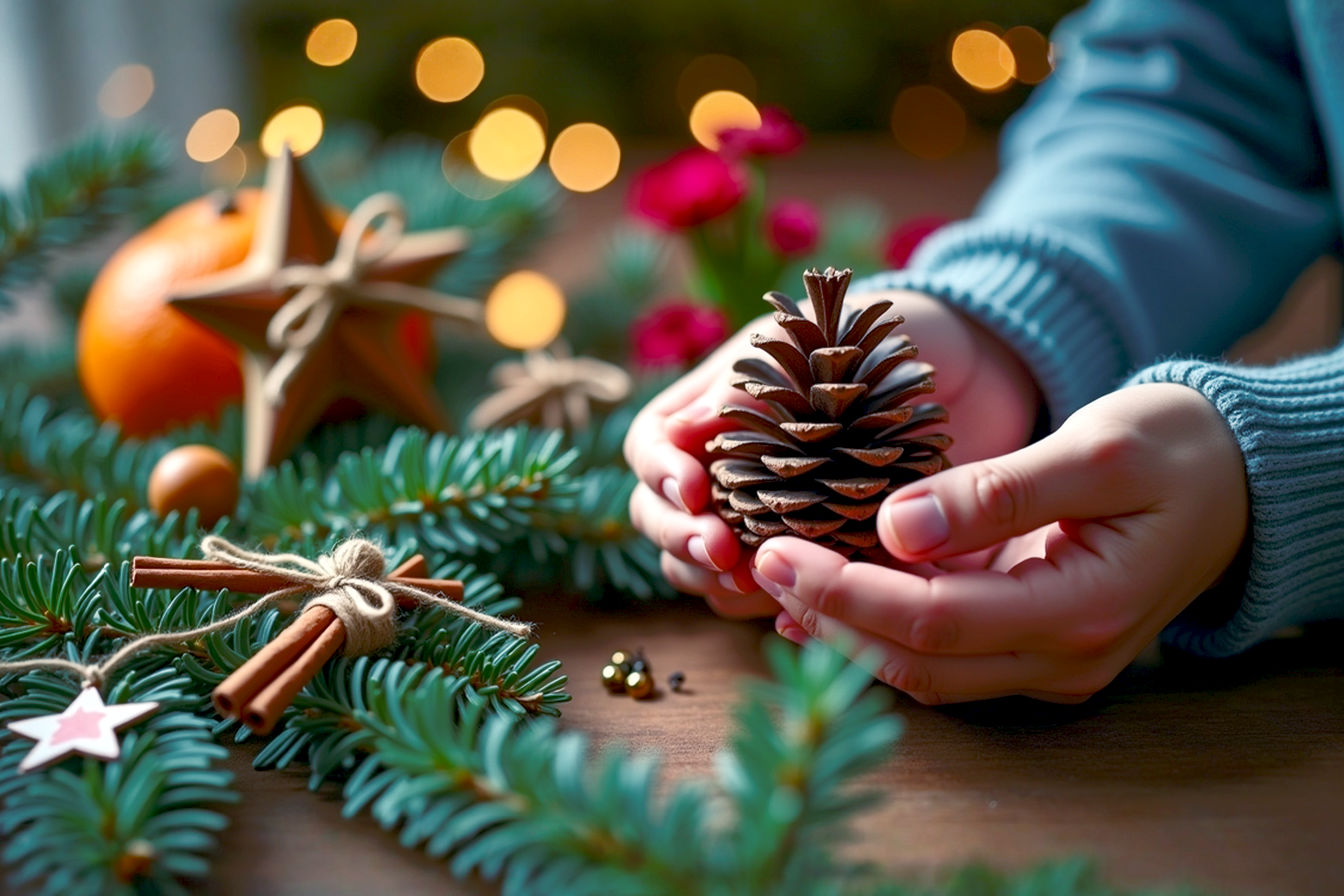This post may contain affiliate links. If you make a purchase through these links, we may earn a commission at no additional cost to you.
The holiday season brings with it a special kind of magic, doesn’t it? It’s a time for twinkling lights, festive music, and cherished traditions. Among the many ways we celebrate, decorating the home holds a unique place. While store-bought ornaments are beautiful, there’s an enduring appeal to handmade decorations, especially those crafted by little hands. They carry a warmth and personal touch that mass-produced items simply can’t replicate.
Handprint crafts, in particular, are incredibly special. They offer a unique way to capture a fleeting moment in time, preserving the actual size and shape of your child’s hand at a specific age. Imagine looking back years from now at a tiny handprint and remembering just how small they once were. It’s a powerful, tangible memory. The handprint Christmas tree stands out as a particularly charming and meaningful project. It combines the festive spirit of the holidays with the irreplaceable sentiment of your child’s unique print.
In this comprehensive guide, you’ll learn everything you need to know to create a beautiful and lasting handprint Christmas tree with your kids. We’ll cover everything from selecting the right materials for safety and durability to step-by-step instructions, creative variations, and even troubleshooting tips. Get ready to make some wonderful memories and a truly unique holiday keepsake!
Why Handprint Christmas Trees Are a Must-Do Holiday Tradition
Creating a handprint Christmas tree isn’t just another craft project; it’s an experience rich with benefits and sentimental value. It’s a wonderful way to connect with your children during the festive season and create something truly memorable.
Capturing Growth and Time
One of the most compelling reasons to make a handprint Christmas tree is its ability to document children’s growth year after year. Each handprint serves as a tiny, personal time capsule. As your child grows, you can create a new handprint tree annually, or add new prints to an existing one. Over time, you’ll build a collection that vividly illustrates their development, from tiny baby hands to larger, more defined prints. This isn’t just a decoration; it’s a tangible memory of their current size, a beautiful record of their journey through childhood. It allows you to literally hold a piece of their past in your hands, making it a truly invaluable keepsake.
Fostering Creativity and Family Bonding
This project is also a fantastic way to engage kids in a fun, artistic activity. Children naturally love to get messy with paint and express themselves creatively. The handprint tree provides a perfect outlet for this, encouraging them to explore colors, textures, and shapes. More importantly, it’s an opportunity for strengthening family connections through shared projects. Working together on a craft fosters teamwork, communication, and a sense of shared accomplishment. The laughter, the conversations, and the collaborative effort involved in creating the tree become part of the memory itself. It’s the joy of collaborative creation that truly makes this activity special, building bonds that last long after the paint dries.
Creating Cherished Keepsakes and Gifts
Beyond being a delightful activity, the finished handprint Christmas tree becomes a unique, personalized decoration for your home. Unlike generic ornaments, this piece tells a story—your family’s story. It adds a deeply personal touch to your holiday decor, making your home feel even more festive and meaningful. Moreover, these trees make incredibly heartfelt gifts for grandparents and loved ones. What grandparent wouldn’t adore a handmade tree adorned with their grandchild’s tiny prints? It’s a gift that comes straight from the heart, carrying far more sentimental value than any store-bought item. This emphasis on personal connection and memory truly highlights the sentimental value over store-bought items.
Developing Fine Motor Skills and Sensory Exploration
While it might seem like just fun, creating a handprint tree also offers developmental benefits for children. The act of dipping hands in paint and pressing them onto a surface provides a rich tactile experience of paint and textures. This sensory exploration is crucial for young children’s development, helping them understand different sensations. Furthermore, the process of carefully positioning their hand and applying pressure helps in improving hand-eye coordination and dexterity. These are fundamental fine motor skills that are essential for tasks like writing, drawing, and even self-care. It’s a playful yet effective way to support their growth.
Planning Your Handprint Christmas Tree Project: Essential Preparations
Before you dive into the fun of painting, a little preparation goes a long way. Choosing the right materials and gathering all your supplies beforehand will ensure a smooth, enjoyable, and successful crafting experience. This planning phase is crucial for both safety and the longevity of your beautiful creation.
Choosing Your Canvas: Surfaces for Your Tree
The surface you choose will impact the final look, durability, and display options for your handprint Christmas tree. Consider your budget, the age of the children involved, and how you intend to use or display the finished piece.
- Paper/Cardstock:
- Pros: This is the most affordable and accessible option. You likely already have some at home. It’s also great for younger kids or if you anticipate needing multiple attempts, as it’s inexpensive to replace. Paper is easy to store flat.
- Cons: Less durable than other options, it can wrinkle, tear, or crease easily. It’s also more susceptible to moisture damage.
- Best for: Very young children, creating multiple small trees, practicing prints, or making gift tags and greeting cards. Standard printer paper works, but thicker cardstock (e.g., 65 lb or 110 lb) is preferable for better durability and less buckling when wet.
- Canvas Board/Stretched Canvas:
- Pros: Offers a very durable and professional look. Canvas boards are rigid and less prone to warping, while stretched canvases provide a classic art piece feel. They are ready to hang once dry and sealed.
- Cons: Generally more expensive than paper. Requires more careful handling during the painting process to avoid accidental smudges on the edges.
- Best for: Creating wall art or a long-term, prominent keepsake. Sizes like 8×10 inches or 11×14 inches work well for individual trees, while larger canvases can accommodate multiple children’s prints or a family tree.
- Wood Slices/Panels:
- Pros: Provides a rustic charm and is incredibly durable. The natural wood grain adds a unique texture and aesthetic. These are excellent for creating unique ornaments or decorative plaques.
- Cons: Can be heavier and might require pre-sanding or priming for optimal paint adhesion, though many craft wood slices come pre-finished. They also require sealing to protect the wood and paint.
- Best for: Individual ornaments, small decorative pieces, or a more natural, earthy-themed tree. Look for smooth, kiln-dried wood slices to prevent cracking.
- Fabric (e.g., tote bags, aprons):
- Pros: This option allows for wearable or usable art. Imagine a tote bag or an apron adorned with your child’s handprint tree! With the right fabric paint, these items can be machine washable, making them practical keepsakes.
- Cons: Requires fabric-specific paints, which are different from standard craft paints. There’s also a curing process (often involving heat-setting with an iron) to make the paint permanent and washable.
- Best for: Personalized gifts like tote bags, aprons, t-shirts, or small wall hangings. Ensure the fabric is pre-washed and free of fabric softener for best results.
- Salt Dough/Clay:
- Pros: This is a wonderfully three-dimensional and tactile option. Kids love working with dough! You can easily shape the dough into a tree, ornament, or plaque before adding handprints.
- Cons: Salt dough can be fragile once dry and requires baking or extensive air-drying time. It also needs specific types of paint (acrylics work well) and a good sealant.
- Best for: Creating ornaments or small freestanding tree sculptures. The recipe for salt dough is simple: 2 cups flour, 1 cup salt, 1 cup water. Knead until smooth, roll out, press hand, cut shape, and bake at 250°F (120°C) until hard (1-3 hours depending on thickness).
Selecting the Right Paint: Safety First!
The most important consideration when choosing paint for handprint crafts is safety, especially when working with young children. Always opt for non-toxic varieties.
- Non-Toxic Tempera Paint:
- Pros: This is the gold standard for kids’ crafts. It’s water-based, making cleanup incredibly easy from skin, clothes, and surfaces. Tempera paints come in vibrant colors and are explicitly labeled as safe for skin contact.
- Cons: Can be somewhat thin or less opaque than acrylics, sometimes requiring multiple coats for full coverage.
- Best for: Most handprint projects, particularly when working with toddlers and preschoolers. It’s ideal for paper and cardstock.
- Acrylic Paint (Non-Toxic, Craft Grade):
- Pros: Acrylics are more durable once dry and offer good coverage with a wider range of colors and finishes (matte, satin, gloss). Many craft-grade acrylics are labeled non-toxic.
- Cons: While non-toxic, acrylics can be harder to clean from clothes once dry and may require a bit more scrubbing to remove from skin compared to tempera. It’s best to clean up immediately.
- Best for: Older kids, and for projects on canvas, wood, or fabric (if specifically formulated for fabric). Always check the label for “non-toxic” certification.
- Fabric Paint:
- Pros: Specifically designed for textiles, fabric paints are formulated to be permanent and flexible on cloth. They are washable after curing (usually by heat-setting with an iron).
- Cons: Has a specific use and requires a heat-setting step, which adds a bit more time and effort to the process.
- Best for: Projects on clothing, tote bags, banners, or other fabric items that you intend to wash.
- Finger Paint:
- Pros: Extremely safe and specifically designed for young children’s hands-on sensory play. It’s very easy to spread and manipulate.
- Cons: Generally less opaque and can be quite messy due to its consistency. The colors might not be as vibrant or long-lasting as tempera or acrylics.
- Best for: Very young children (babies and young toddlers) for initial sensory exploration, where the process is more important than the perfect final product.
Gathering Your Supplies: A Comprehensive Checklist
Having all your materials ready before you start will prevent interruptions and keep the creative flow going. Here’s a detailed list of what you’ll need:
- Chosen canvas/surface: (e.g., cardstock, canvas board, wood slice, tote bag, salt dough)
- Green paint: Essential for the tree itself. Consider various shades of green (light, medium, dark) to add depth and dimension to your tree.
- Brown paint: For the tree trunk.
- Yellow/gold paint: For the star at the top of the tree.
- Red, white, blue, silver, gold paints/glitter: For “ornaments” and other decorations. A variety of colors makes the tree more festive.
- Paper plates or paint palettes: For dispensing paint, making cleanup easier.
- Paintbrushes: Various sizes are helpful – a wider brush for applying paint to hands, smaller brushes for details like ornaments or the trunk.
- Sponges (optional): Small sponges can be used for applying paint to hands evenly or for creating textured “snow” or “ornaments.”
- Wet wipes/damp cloths: Absolutely essential for immediate cleanup of little hands after each print. Have plenty on hand!
- Newspaper/drop cloths: To protect your workspace (table, floor) from paint spills. Old shower curtains or plastic tablecloths also work well.
- Smocks/old clothes for kids: Dress children in clothes you don’t mind getting paint on. Even washable paints can sometimes leave faint stains.
- Glitter, sequins, small pom-poms, buttons, stickers: For embellishments. These add sparkle, texture, and personality to your tree.
- Glue: PVA (white craft glue) or a non-toxic school glue for attaching embellishments.
- Scissors: Child-safe scissors if older kids will be helping with cutting out shapes or paper ornaments.
- Markers/pens: Fine-tip permanent markers or paint pens for adding names, dates, and personalized messages.
- Hair dryer (optional): A hairdryer on a cool setting can significantly speed up drying time between paint layers, preventing smudges and color bleeding.
- Protective sealant: (e.g., Mod Podge, clear acrylic spray sealant) – This is important for durability and longevity, protecting the paint from fading, dust, and minor damage.
Gathering these supplies beforehand will make the entire process smoother and more enjoyable for everyone involved.
Step-by-Step Guide: Crafting Your Handprint Christmas Tree
Now that you’ve gathered all your materials, it’s time to bring your handprint Christmas tree to life! Follow these steps for a fun and successful crafting session.
Step 1: Prepare Your Workspace and Little Artists
Preparation is key to a stress-free crafting experience. This initial setup will save you time and prevent unnecessary messes.
First, lay down newspaper or a drop cloth generously over your work surface and the surrounding floor area. Paint can splatter, and little hands can be unpredictable! A plastic tablecloth or an old shower curtain also works wonderfully as a protective barrier. Next, dress kids in old clothes or smocks. Even washable paints can be tricky to remove from certain fabrics, so it’s best to err on the side of caution. If you don’t have a dedicated art smock, an old oversized t-shirt works perfectly.
Before you begin, have all your supplies within reach. This includes your chosen canvas, all paint colors, brushes, paper plates for paint, wet wipes, and any embellishments. You don’t want to be scrambling for a missing item with paint-covered hands! Finally, explain the process to the children in simple terms. Let them know what you’re going to do, what their role will be, and what to expect. For example, “We’re going to put green paint on your hand to make a Christmas tree! Then we’ll wipe it off right away.” This helps manage expectations and makes them feel involved.
Step 2: Creating the Tree Base – The Trunk
Every sturdy tree needs a strong base. This step sets the foundation for your handprint masterpiece.
Using brown paint and a medium-sized paintbrush, paint a small tree trunk at the bottom center of your chosen surface. The size of the trunk should be proportionate to the size of your canvas and the expected size of the handprint tree. A simple rectangle or a slightly flared shape works well. Don’t make it too tall, as you’ll want plenty of space for the handprint “branches.” After painting, allow it to dry slightly, or use a hairdryer on a cool setting for speed. This prevents the brown paint from mixing with the green handprints you’re about to add, ensuring a crisp, clean look.
Step 3: The Handprint Layers – Building the Tree
This is the heart of the project – creating those precious handprints that form the tree’s shape. This step requires a bit of technique and patience, especially with younger children.
Technique for Perfect Prints
Getting a clear, crisp handprint is essential. Here’s how to achieve it:
- Apply a generous, even layer of green paint to one of the child’s hands (palm and fingers). You can do this with a paintbrush, ensuring full coverage without globs. Alternatively, pour a small amount of paint onto a flat surface (like a paper plate) and have the child gently press their hand into it, then lift it straight up. The goal is complete, thin coverage.
- Press the hand firmly but gently onto the canvas, starting from the bottom, slightly overlapping the trunk. Guide their hand to ensure good contact across the entire palm and all fingers. Avoid wiggling or sliding.
- Lift the hand straight up to avoid smudging. This is critical! Any lateral movement will blur the print.
- Immediately wipe the child’s hand clean with a wet wipe or damp cloth. Have a designated “cleaning station” ready with a bowl of warm soapy water and towels for a more thorough wash after a few prints.
Layering for a Tree Shape
To create the classic Christmas tree silhouette, you’ll layer the handprints in a triangular fashion:
- Start with a wider base of handprints at the bottom of your canvas, just above the trunk. For example, you might place 3-4 prints side-by-side, slightly overlapping each other to create a dense, bushy look.
- For the next layer, place fewer handprints slightly above and inward, creating a narrower row. Continue this process, decreasing the number of handprints per row, until you reach a single handprint at the very top, forming the peak of your tree. This gradual reduction in width as you move upwards naturally forms the triangular tree shape.
- Tip for multiple children: If you have more than one child participating, consider using different shades of green for each child’s prints. This adds visual depth and makes each child’s contribution distinct. For instance, the youngest child could use a lighter green for the bottom layers, and older children could use darker shades for the upper layers. Alternatively, each child could contribute a specific layer or section of the tree.
Drying Between Layers (Crucial for Clarity)
This step cannot be stressed enough: allow each layer of handprints to dry completely before adding the next. Attempting to add new prints on wet paint will lead to smudging, bleeding colors, and a muddy appearance. Depending on the paint thickness and humidity, this could take 15-30 minutes per layer. A hairdryer on a cool setting can significantly speed this up, reducing drying time to just a few minutes per layer. This patience will pay off with crisp, clear handprints that truly stand out.
Step 4: Adding the Star and Decorations
Once your green handprint tree is fully formed and dry, it’s time for the fun of decorating! This is where your kids’ creativity can truly shine.
The Star
Every Christmas tree needs a star!
- Using yellow or gold paint, you can either paint a star freehand at the very top of your tree, or for a more defined shape, use a star-shaped sponge or stamp.
- Alternatively, for a more dimensional look, cut a star from glitter paper or metallic cardstock and glue it on once the paint is dry. This adds a lovely sparkle and texture.
Ornaments and Garland
This is the most exciting part for kids!
- Once the green handprint tree is fully dry (ensure it’s completely dry to prevent paint mixing), invite kids to decorate!
- Use small dabs of colorful paint (red, blue, silver, gold, etc.) for “ornaments.” Kids can use their fingertips, cotton swabs, or small paintbrushes to create these dots.
- For extra sparkle and texture, apply glitter, sequins, small pom-poms, or tiny buttons with craft glue. Encourage them to place these “ornaments” randomly or in patterns.
- Paint thin lines for “garland” using a fine-tip paintbrush or glitter glue. They can zig-zag across the tree or create swirling patterns.
- Encourage creativity and unique touches. Let them choose the colors and placement. This is their tree, after all!
Step 5: Personalization and Finishing Touches
These final steps transform your craft project into a cherished, lasting keepsake. Don’t skip them!
Adding Names and Dates
This is arguably the most important step for a keepsake.
- Use a fine-tip permanent marker or a paint pen to add the child’s name(s) and the year. This is vital for a keepsake! Without the date, you might forget when it was made, diminishing its value as a record of growth.
- You can write the names and date subtly on the trunk, along the bottom edge, or even on the back of the canvas.
- Consider adding a short message or a favorite Christmas quote to make it even more personal. For example, “Our little hands, growing so fast! Christmas 2025.”
Sealing for Longevity (Optional but Recommended)
To protect your beautiful handprint Christmas tree and ensure it lasts for many holidays to come, applying a clear sealant is highly recommended.
- Once all paint and glue are completely dry (this is crucial – allow at least 24 hours, or even longer for thick paint or glue), apply a clear sealant.
- Mod Podge (matte or gloss finish): This is a popular choice. Use a clean paintbrush to brush on a thin, even coat over the entire painted surface. It will look milky when wet but dries completely clear. You can apply 2-3 thin coats for extra protection, allowing each coat to dry between applications.
- Clear Acrylic Spray Sealant: This offers a durable, protective layer. Apply in a well-ventilated area (preferably outdoors) according to the product instructions. Hold the can about 8-12 inches away and apply light, even coats. This type of sealant provides excellent protection against fading, smudging, and dust.
- This step protects the paint from fading, smudging, and dust, ensuring your keepsake lasts for years and can be safely stored and displayed without damage.
Creative Variations and Advanced Techniques
Once you’ve mastered the basic handprint Christmas tree, you might want to explore some creative variations to make each year’s project unique or to adapt it for different purposes. These ideas can add even more charm and personalization to your holiday crafts.
Multi-Child Handprint Tree
If you have multiple children, creating a collaborative handprint tree can be a wonderful family activity.
- Each child contributes a different shade of green for distinct layers. For instance, the youngest child might use a light lime green for the bottom, the next child a forest green for the middle, and the oldest a darker emerald for the top. This creates a beautiful gradient effect and clearly shows each child’s contribution.
- Alternatively, you can have the youngest child’s prints at the bottom (as they are usually the smallest) and the oldest at the top, symbolically representing their growth within the family.
- For a larger family, you could assign each child a specific “branch” or a cluster of prints on different parts of the tree, allowing them to decorate their section.
Handprint Ornaments
Instead of a large flat tree, you can create individual handprint ornaments.
- These can be made on salt dough, small wood slices, or even cardstock cutouts shaped like ornaments.
- Once the handprint is dry, you can decorate each handprint as a mini-tree (adding a tiny star and dots for ornaments) or transform it into a specific Christmas character, like a reindeer or Santa, by adding features.
- Punch a hole at the top and thread a ribbon through for hanging.
Footprint Star/Angel
For a truly unique touch, especially with babies or toddlers, consider incorporating a footprint.
- Use a child’s footprint for the star at the top of the tree. The heel can form the base of the star, and the toes can be the points.
- Alternatively, a footprint can be transformed into an angel shape by adding painted wings and a halo around the heel. This adds another dimension of sentimentality.
Themed Trees
Give your handprint tree a specific theme to match your holiday decor or simply for fun.
- Winter Wonderland: Use white and silver paint for the handprints to mimic snow-covered branches, with blue or silver accents for ornaments. Add glitter for a frosty effect.
- Candy Cane Tree: Alternate red and white striped handprints for a festive, whimsical look.
- Rainbow Tree: Each layer of handprints could be a different color of the rainbow, creating a vibrant and cheerful tree.
Adding Textures and Dimensions
Elevate your tree by incorporating various textures and three-dimensional elements.
- Use cotton balls for fluffy snow at the base or on the branches.
- Attach small twigs or cinnamon sticks for a rustic, natural branch effect.
- Incorporate glitter glue for controlled, sparkly effects on ornaments or garland.
- Attach small bells or beads for extra dimension and a subtle jingle. You can even glue small bows or miniature bows.
Framing and Display Ideas
How you display your finished handprint tree can enhance its impact.
- Frame your canvas tree for a polished, professional look. Choose a frame that complements your home decor.
- Mount paper versions on colored cardstock that contrasts with the green handprints, then laminate them for extra protection.
- Create a gallery wall of handprint trees from different years. This allows you to see the progression of your children’s growth over time, making for a truly heartwarming display.
- For fabric versions, hang them as wall banners or use them as functional items like festive pillow covers or placemats.
These variations ensure that each handprint Christmas tree you create can be a fresh, exciting project, year after year.
Troubleshooting Common Handprint Craft Challenges
Even with the best intentions and preparations, crafting with kids can sometimes present unexpected challenges. Don’t worry, most common issues have simple solutions. Knowing how to troubleshoot will help you maintain your patience and ensure a positive experience for everyone.
Smudged Prints
This is perhaps the most common frustration in handprint crafts.
- Ensure hands are lifted straight up: The primary cause of smudges is sliding the hand sideways or dragging it across the surface when lifting. Emphasize to the child (and demonstrate) lifting their hand directly upwards like a stamp.
- Use less paint, or spread it more evenly: Too much paint can cause pooling and smudging. A thin, even layer is ideal. If you’re applying paint with a brush, ensure it’s not overloaded. If using a paint tray, ensure the paint is spread thinly.
- Practice on scrap paper first: Before committing to your main canvas, do a few practice prints on a piece of scrap paper. This allows both you and your child to get a feel for the right amount of pressure and the lifting motion.
- Allow sufficient drying time between layers: As mentioned earlier, rushing this step will almost guarantee smudges and color bleeding. Patience is key!
Uneven Paint Coverage
Sometimes, prints come out looking patchy or incomplete.
- Apply paint generously and evenly with a brush or sponge: Don’t be shy with the paint, but ensure it’s spread smoothly across the entire palm and all fingers. A foam brush or a small sponge can help achieve very even coverage.
- Consider using a roller for very even coverage on the hand: For older children or if you want perfectly uniform prints, a small foam roller can be used to apply paint to the hand. The child places their hand flat, and you gently roll the paint over it.
- Press firmly and evenly: Ensure the child presses their entire hand down with consistent pressure. You might need to gently press down on the back of their hand and fingers to ensure all parts make contact with the surface.
Kids Not Cooperating
Let’s be honest, kids can be unpredictable!
- Keep it fun and low-pressure: If a child is resisting, don’t force it. Make it a game! “Can you make a super-duper flat hand?” or “Let’s see how fast we can get this paint on and off!”
- Break the activity into smaller steps: Instead of doing all the handprints at once, do a few, take a break for a snack or another activity, then come back for more.
- Offer choices: “Do you want to put your hand here or here?” or “Which color ornament do you want to add first?” Giving them a sense of control can increase cooperation.
- Have a designated “cleanup” station ready for quick hand washes: Knowing they can get clean hands immediately after the print can be a huge motivator.
- Involve them in the setup and cleanup: Even small tasks like laying down newspaper or putting caps on paint bottles can make them feel like a valuable helper.
- Use positive reinforcement: Praise their effort, their creativity, and their cooperation. “Wow, that’s a fantastic handprint!” or “Great job holding your hand still!”
Paint Stains
Paint stains are an inevitable part of crafting with kids, but they can be minimized.
- Pre-emptively cover surfaces and wear old clothes/smocks: This is your best defense. Don’t underestimate how far paint can travel!
- Use non-toxic, washable paints where possible: Tempera paint is typically the easiest to clean. Always check the label for “washable” claims.
- Clean up spills immediately with soap and water: Don’t let paint dry on surfaces or clothing. The quicker you act, the easier it is to remove.
- For stubborn stains, consult fabric care instructions: Some fabrics might require specific stain removers or pre-treatment.
Drying Time Issues (Especially for Salt Dough)
Waiting for paint or dough to dry can test anyone’s patience.
- Ensure adequate air circulation: Good airflow helps paint and dough dry faster. Open a window or use a fan (not blowing directly on the project, which could cause cracking in salt dough).
- Use a hairdryer on a cool setting for paint: As mentioned, this is a fantastic trick for speeding up paint drying between layers.
- For salt dough, follow baking/drying instructions precisely: Thicker pieces will naturally take much longer to dry or bake through. If baking, ensure a low temperature to prevent burning or puffing. For air drying, flip the pieces periodically. Impatience here can lead to cracked or crumbly dough.
By being prepared for these common challenges, you can navigate your handprint Christmas tree project with greater ease and ensure a more enjoyable experience for everyone.
Beyond the Tree: Other Sentimental Handprint Holiday Crafts
The handprint Christmas tree is just one of many wonderful ways to capture your child’s prints during the holidays. Once you’ve enjoyed making your tree, you might be inspired to try other sentimental handprint and footprint crafts that make equally cherished keepsakes or gifts. These projects are fantastic for continuing the tradition of capturing growth and creating personalized holiday decor.
- Handprint Wreath: Instead of stacking handprints to form a tree, arrange green handprints in a circular pattern to create a festive wreath. You can then add painted red berries (fingerprints work well!) or small red pom-poms and a bow at the bottom. This makes a lovely door hanger or wall decoration.
- Footprint Reindeer: This is an incredibly popular and adorable craft, especially for babies and toddlers. Paint your child’s foot brown and press it onto paper. Once dry, turn the print upside down (heel at the top). The heel becomes the reindeer’s head, and the toes become the nose and ears. Then, use a marker to draw antlers, googly eyes, and a bright red nose (a red fingerprint or a small red pom-pom).
- Handprint Santa/Elf: Transform a red handprint into Santa’s body. The palm is Santa’s belly, and the fingers are his legs and arms. Add a white fingerprint beard, a red hat, and a black belt. For an elf, use a green handprint, adding a pointy hat and rosy cheeks. These can be made on cardstock and cut out to be ornaments or gift tags.
- Handprint Snowman: This craft is perfect for winter themes. Use white paint to create several handprints stacked vertically, slightly overlapping, to form the snowman’s body. Once dry, add painted details like coal eyes, a carrot nose, stick arms, and buttons. You can also add a scarf made from ribbon or painted on.
- Handprint Mistletoe: A simple yet elegant craft. Use green paint for handprints, arranging them in a small cluster. Once dry, add small red berry dots (using a fingertip or cotton swab) in the center. This can be a sweet little hanging decoration or an embellishment on a Christmas card.
- Handprint Angels: For a heavenly touch, use white or light-colored paint to create handprints. Once dry, add a painted head with a halo above the palm, and perhaps some glitter for wings. These can be cut out and hung as ornaments or used as toppers for gifts.
These alternative handprint and footprint crafts offer endless possibilities for creativity and allow you to continue building a collection of sentimental holiday memories year after year. They are perfect for personalizing gifts, decorating your home, or simply enjoying a fun, messy, and meaningful activity with your children.
Conclusion: A Keepsake of Love and Laughter
As we wrap up our guide on creating a handprint Christmas tree, it’s clear that this isn’t just a simple craft project. It’s an opportunity to create something truly magical and deeply personal. The process itself, filled with giggles, paint-covered hands, and shared moments, becomes a cherished memory. And the finished product? It’s a beautiful, tangible representation of your child’s growth and your family’s love, captured in time.
This project offers so much more than just a decoration. It provides a unique way to document children’s growth, year after year, allowing you to literally see how much their tiny hands have changed. It fosters creativity and strengthens family bonds, turning a simple afternoon into a treasured experience of collaborative art. And ultimately, it creates a cherished keepsake that will adorn your home with sentimental value, far surpassing any store-bought item.
We truly encourage you to make creating a handprint Christmas tree a yearly tradition. Imagine a collection of these trees, each one marking a different stage in your child’s life, each a testament to the love and laughter shared during the holiday season. These aren’t just crafts; they are keepsakes of love and laughter, embodying the true spirit of Christmas—a time for family, joy, and creating lasting memories. So, gather your supplies, embrace the mess, and get ready to make a holiday tradition that your family will cherish for years to come.






